Heat is the largest energy end use. Providing heat for homes, industry and other applications accounts for around half of total energy consumption. Nevertheless, from policy side renewable power gets much more attention than renewable heat.
Bioenergy is still the dominant type of renewable heat and has some unique assest; for example, it has the potential to provide renewable heat at high temperature for use in process industry and it can be produced from by-products.
This session showed relevant cases of biobased heat and dig deeper into emission abatement, which is a critical issue for biomass combustion.
Moderators
Morten Tony Hansen, Senior Consultant, Ea energy Analysis, Denmark
Christoph Schmidl, Key Researcher, Fixed Bed Conversion Systems, BEST Bioenergy and Sustainable Technologies, Austria
Presentations
Biomass combustion in a Northern European food industry – A case from the Netherlands ![]()
Jaap Koppejan, Managing Director, Pro Biomass BV, The Netherlands
Biomass providing process heat in an industrial bakery ![]()
Thomas Nussbaumer, Professor, Verenum / Lucerne University of Applied Sciences and Arts, Switzerland
Decarbonizing industrial process heat: the role of biomass ![]()
Olle Olsson, Team Leader: Energy and Industry Transitions, Stockholm Environment Institute, Sweden
Raising awareness and changing behaviour with the traveling combustion education – The CleanAir II project ![]()
Manuel Schwabl, Area Manager, Fixed Bed Conversion Systems, BEST Bioenergy and Sustainable Technologies, Austria
Strategies for reducing the impact on air quality from residential and commercial wood combustion ![]()
Hans Hartmann, Head of the Solid Biofuels Department, TFZ Technologie- und Förderzentrum, Germany
.
Highlights
Biomass based high temperature heat for industry:
- Industry is responsible for 30% of global greenhouse gas emissions, of which most are related to industrial heat production. Industrial heat is very diverse, with many different applications that vary in temperature, direct/indirect heat, or control & flexibility, so solutions are difficult to generalize. Decarbonisation options for energy demand in industries are CCS, electrification, hydrogen and biomass, each with their pros and cons depending on the application. An extra advantage of biomass is that it can enable negative emissions when combined with CCS.
- Bioenergy in industry has mainly been concentrated in agro/forestry processing industries based on their own process residues. Other industries are now also considering biomass to replace their fossil fuel consumption. The potential is not limited to energy intensive industries (steel, cement etc), process industries also represent a large potential. These are usually much smaller, and the annual amount of fuel needed to cover an industrial heat demand can in many cases be sourced locally.
- The design of the bioenergy plant is very site specific. The choice of solution depends on existing technology, biomass availability, and logistic options. The bioenergy plant should be designed according to accurate fuel specifications, often based on local availability of low-grade biomass resources. These are challenging fuels in comparison to clean wood chips or pellets. There is a need to further develop technologies for ash-rich biomass fuels for high-temperature heat in the size range up to 5 MW.
Low emission residential scale biomass combustion:
- Wood combustion in private households is an important source of PM emissions. IEA Bioenergy Task 32 is analysing approaches concerning emission reduction strategies in the field of wood combustion in its member countries. Some examples: replacement strategies and expiration dates for old wood stoves/boilers; regional (potentially temporary) bans for the use of wood stoves and boilers; tightening of emission limits for biomass combustion; regular on-site inspections for wood combustion appliances; support the installation of particle precipitation devices or catalysts to limit emissions; specific information campaigns on clean use of wood fuels.
- The way wood stoves are operated can have a major influence, with improper operation leading to much higher emissions. It is important to raise awareness and change behaviour where needed. An Austrian project rolled out a campaign to demonstrate good operating practices to users, e.g., how to ignite a wood stove. Pellet stoves are more automated so the user behaviour has less impact.

Recording


